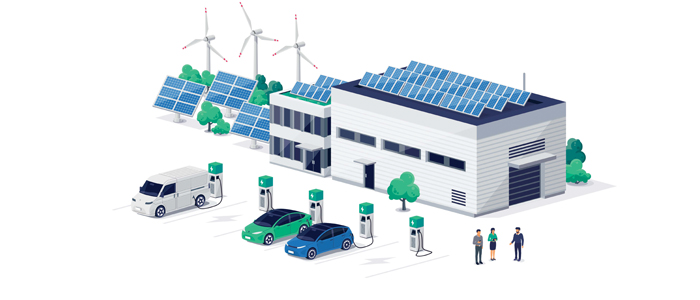- +61 7 3374 2877
- Email Us
Our electricity grid is a complex web of “voltage tiers” that transmits and distributes electricity at different power levels. The Low Voltage (LV) distribution networks are designed to deliver a steady stream of 220-400V electricity to homes and businesses, supplied by an extensive LV infrastructure that was mostly constructed between the 1960s and 1980s. These electrical assets were built to withstand the test of time with lifespans of up to 60 years. However, most of the infrastructure we currently use was designed and built before Net Zero was even a concept.
To keep up with the ever-evolving energy landscape, Distribution Network Service Providers (DNSPs) are transitioning towards a Distribution System Operator (DSO) model. This involves a more active approach to planning, operating, and maintaining infrastructure, with digitalisation as a key aspect of this transition.
Demand is outpacing capacity and will continue to triple over the next decades
As we move towards a more sustainable energy future, we are seeing a surge in the deployment of Distributed Energy Resources (DERs) such as Solar Panels, Heat Pumps, Electric Vehicles, Batteries and more. This increased demand is putting a significant strain on the distribution network, forcing DNSPs to rethink their approach to network design, maintenance, and operation.
Over many decades, LV copper cables of varying quality and make have been installed, and the reliance on this infrastructure is only increasing. This has resulted in costly and emission-intensive work to maintain and upgrade the network. To tackle these challenges, DNSPs are turning to network data and grid automation to manage their assets more efficiently, predict and prevent failures, and identify areas where reinforcement is needed most. By operating a truly smart network, DNSPs can accommodate the growth in demand and support the deployment of DERs at scale, rising to the challenge of building a sustainable energy future.

Future-proof solutions are necessary to support the drive to Net Zero
As electrification increases and demand for energy rises, DNSPs must ensure their networks can support this growth while also reducing emissions from their operations. This is no easy feat, as the maintenance, repair and replacement of electrical assets can be both expensive and emission-intensive.
To address this, DNSPs are incentivised to implement solutions that reduce the need for travel and new materials, and better utilise existing infrastructure. This will result in DNSPs pursuing new ways of engaging with consumers to minimise demand during peak hours when the network is strained. This includes establishing LV flexibility markets, setting up demand-side response (DSR) agreements as well as engaging with energy aggregators to help balance the grid locally.
With 70 countries committed to Net Zero emissions, DNSPs worldwide face similar challenges
Operating the grid in a smarter way will be essential, influencing everything from new connection requests and customer complaints to asset replacement and grid capacity management. To achieve this, DNSPs will require real-time and hyperlocal insights into network activity. Monitoring the right assets is critical, as is navigating through vast amounts of data to extract the most useful insights. A scalable platform that doesn’t fully rely on cloud storage and processing, and can be seamlessly updated and upgraded to meet evolving needs, will be of immense value. The journey to Net Zero is just beginning, and DNSPs must be prepared to adapt and evolve to meet the demands of a rapidly changing energy landscape.
The 4 key challenges network operators are facing
All these challenges point to the need for DNSPs to have complete visibility of the LV network. To keep the network running smoothly, constant monitoring and analysis using advanced algorithms and data analytics are necessary to stay ahead of any issues that may arise.